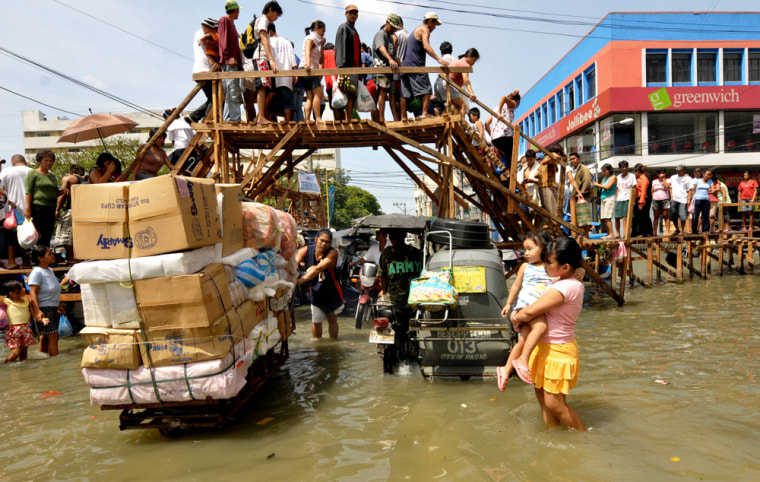Police went door-to-door urging residents to leave landslide-ravaged areas of the northern Philippines on Saturday in a "pre-emptive evacuation" as a new typhoon loomed after recent back-to-back storms killed more than 750 people, officials said.
Forecasters said Typhoon Lupit — the Filipino word for cruel — had intensified overnight and by late Saturday was packing winds of 87 mile per hour and gusts of up to 106 mph.
The Philippines is still recovering from Tropical Storm Ketsana in late September, which triggered the worst flooding in Manila in more than 40 years, and the Oct. 3 landfall of Typhoon Parma, which lingered for a week while drenching the main island of Luzon. The two storms killed 773 people and affected more than 7 million.
In Benguet province's Cordillera mountain region, Gov. Nestor Fongwan said he had ordered police officers to go house-to-house to tell people to leave ahead of Typhoon Lupit, which could reach the Philippines by Tuesday.
"Definitely, they must go," Fongwan told The Associated Press. At least 288 died in storm-fueled landslides in the area about 130 miles north of the capital, Manila.
While Typhoon Lupit was days away and could still change course, officials said early action was necessary. Defense Secretary Gilbert Teodoro, who also heads the National Disaster Coordinating Council, said people in areas still recovering would be easier to persuade to leave their homes in a "pre-emptive evacuation."
Evacuating early "might be a much easier endeavor now," Teodoro told reporters in Manila, the capital.
Lupit could still spare the saturated northern Philippines and veer north toward Taiwan early next week, or it could track the same devastating path as Typhoon Parma, which lingered for a week and dumped more rain after making landfall in the north on Oct. 3, chief government forecaster Nathaniel Cruz said.
He said Lupit was slowing down over the sea east of Luzon, where it could further gain strength. It was about 625 miles east of Manila at 4 p.m. (4 a.m. EDT) Saturday.
Disaster officers urged local officials to tell residents to immediately evacuate at the first sign of landslides, Cordillera regional civil defense chief Olive Luces said.
"Some people are just really stubborn and refuse to leave," she said, adding that survivors of Parma's landslides told of watching water seep from the walls and floors of homes before the ground collapsed around them.
Teodoro said the government will airlift supplies, including rescue equipment, to remote areas still isolated in the wake of the two earlier storms.
Health officials say 1.7 million people exposed to floodwaters in and around Manila were being threatened by leptospirosis, a disease spread by water contaminated with urine of infected animals.
The disease has killed 96 of 1,336 people who have been brought to hospitals for treatment since Oct. 1, said Dr. Yolanda Reyes, head of the National Center for Disease Prevention and Control.
The Health Department will distribute antibiotics to 1.3 million people in high-risk areas to help prevent infection, she said.
More on: Philippines
